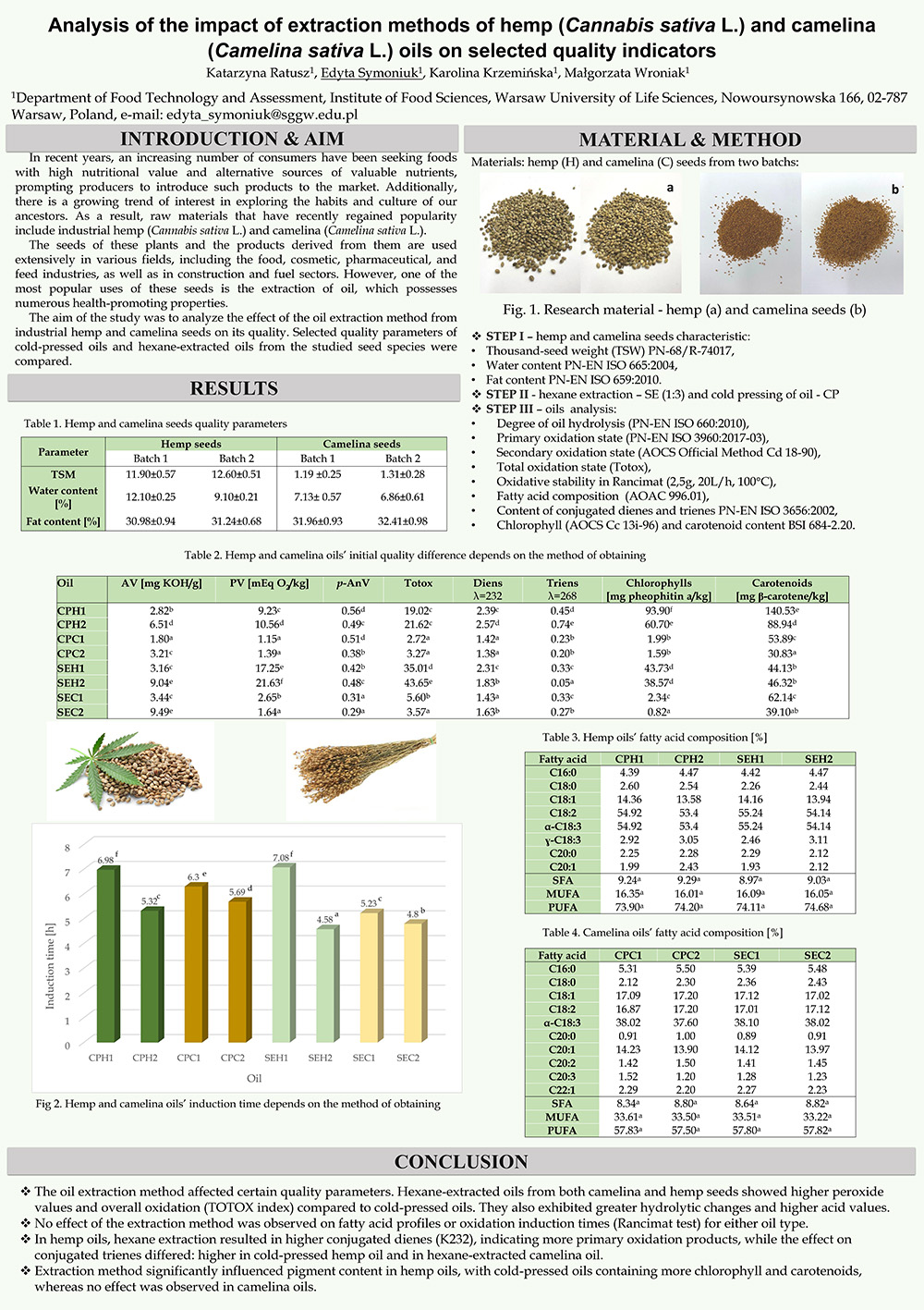The extraction of oils from seeds can be carried out using various methods, depending on the technology and the desired properties of the oil and its application. Extraction is one of the key processes in the production of oil from seeds. Commonly used techniques for extracting oil from seeds include cold or hot pressing, solvent extraction, supercritical fluid extraction, and ultrasound-assisted solvent extraction.
This study aimed to evaluate the physicochemical quality parameters and fatty acid profiles of cold-pressed hemp and camelina oils. The analyses revealed that both oils were characterized by high nutritional value, particularly due to their polyunsaturated fatty acid (PUFA) content. Hemp oil contained 57.76% PUFAs, including 17.55% α-linolenic acid (ALA, C18:3 n-3) and 57.76% linoleic acid (LA, C18:2 n-6), resulting in an n-6/n-3 ratio of 3.3:1, which is considered nutritionally favorable. Camelina oil demonstrated an even higher ALA content at 35.29%, with a total PUFA fraction of 61.62%, and an n-6/n-3 ratio of 0.5:1, indicating its strong potential as a functional food ingredient. In terms of physicochemical properties, hemp oil showed a peroxide value of 3.28 meq O₂/kg, while camelina oil reached 4.12 meq O₂/kg, both remaining within acceptable limits for edible oils. The acid value was 1.46 mg KOH/g for hemp and 1.82 mg KOH/g for camelina oil. These results confirm their freshness and technological suitability.
The study concluded that both hemp and camelina oils are valuable dietary fats, rich in essential fatty acids and characterized by a favorable balance of n-6 to n-3 fatty acids. Camelina oil, with its exceptionally high ALA content and low n-6/n-3 ratio, stands out as particularly beneficial for health promotion. Both oils meet quality standards and may serve as alternatives to more common edible oils, offering promising applications in the functional food and nutraceutical industries. In summary, while the extraction method did not alter the fundamental fatty acid profiles of hemp and camelina oils, it substantially influenced oxidation parameters, pigment content, and the extent of hydrolytic changes. These findings highlight the importance of selecting an appropriate extraction method depending on the intended application and desired quality characteristics of the oil.
Keywords: Cannabis sativa L., Camelina sativa L., hemp seed, camelina seed, cold pressure, solvent extraction
